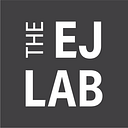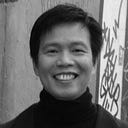Somali, Other African Media Play a Critical Role in Minnesota’s Diverse Communities
It’s early Friday morning, and Siyad Salah drives his taxi around Cedar-Riverside in Minneapolis-St. Paul. He looks out the windshield, examining the neighborhood even though he’s been in the area many times. When he asks questions, he can be mistaken for an undercover cop rather than a taxi driver. He has a camera and tripod in the cab’s compartment. His pen and notebook are by his side.
Salah likes to talk to people he meets. From time to time, he stops by a gas station or a local grocery story, and then chats with some immigrant workers there. In a state where more than 8 percent of residents are foreign-born, Siyad knows that any interesting story about or for his community — whether it may come from a passenger or something that he’d find while driving — could unfold anytime.
I have known Salah for more than a decade. I first met him when I was with New America Media, and we organized a press event on immigration in the Twin Cities. Siyad works as a taxi driver by dawn and a journalist by noon. A refugee from Somalia, he once told me that he does journalism for the Somali and other African communities in Minnesota, and he drives a cab to earn a living for his family.
“When my family first came to America, there was no television show in Somali. We didn’t understand what was happening around us. My mother felt so lonely and isolated,” he said. “That was how I got motivated to be involved in producing a show called ‘Somali TV’ in our native language.”
Today, as immigration and race continue to be a profoundly complicated issue in Minnesota and U.S. politics in general, more Somali and other African media outlets have remained robust across the state — both to inform both newcomers and those immigrants and refugees who have already settled into a larger American society and to reduce stigma by magnifying the community’s positive contributions.
The Minneapolis-St. Paul region has the largest Somali population in the United States. Many of them first came as students or businesspeople, and in recent decades as refugees as a result of the Somali Civil War. To date, the Twin Cities have had a number of Somali programs and news outlets — including Somali TV, the state’s first Somali television program to air on Minneapolis Television Network (MTN) and other online platforms, Somali American, Somali Link Radio on KFAI, KALY Somali American Radio and Tusmo Times. The area also has a diverse African media, such as The Africa Paper, Mshale (Kenyan) and Zehabesha (Ethiopian).
“The [African] news outlets greatly help our communities integrate into the American life,” said Abdulkadir Osman, a Somali American community leader. “At the same time, they connect us all to our relatives and loved ones we left behind in our home countries.”
Osman, who founded Somali TV and brought it to MTN with Salah in 1997, says these African news media have played an important role in keeping his community civically engaged. They’ve helped to produce American politicians, writers, and activists, including Congresswoman Ilhan Omar, Nuruddin Farah, and Abdi Warsame.
Minnesota’s other immigrant enclaves
In the late 19th century, European immigrants — mostly those from Scandinavia, Germany, Ireland, and Italy — came to Minnesota and made it their home. Then, in the early 20th century, the next wave of immigrants were Poles and Mexicans. From the late 20th century till present, immigrants from Southeast Asia, East Africa, and Central America have settled across the state. The immigrant community has ultimately made Minnesota one of the most diverse states in the U.S., in terms of race, ethnicity, religion, age and educational attainment.
With the recent increase of the Asian immigrant population, Minneapolis-St. Paul has established strong and reliable Asian media. There’s one Chinese-language news outlet, China Tribune, in the Twin Cities. Still, the Hmong-American community is the most dominant market. Two of these prominent community outlets — Hmong Today and Hmong Times — are weekly publications. However, it’s Hmong radio stations have the largest audience-base in the Hmong community.
Wameng Moua, editor and publisher of Hmong Today, told me that most of the U.S.-born or raised Hmong Americans tend to read the online English edition or on social media, while the first-generation and Hmong immigrants prefer to get their information from radio stations.
“Most younger Hmong Americans interact and get their information on Facebook. So, it is a must to have a social media account for the paper — and it is less expensive to run,” he said.
Martha Vickery, publisher of the English-language The Korean Quarterly, said that the Asian population has greatly increased in the Twin Cities. “We are seeing more and more Southeast Asian immigrants — Thai, Cambodians, Filipinos and Vietnamese — immigrating to the area,” she said. “They could surpass the Hmong population in the coming years.”
Most recently, the Sahan Journal launched in August 2019 with coverage for and about Minnesota’s immigrant communities, led by Somali-American journalist Mukhtar Ibrahim. “We want to show how these communities are transforming, what they’re going through, and be a professional news website that produces high-quality, highly edited stories,” said Ibrahim.
That means community-based and led media will be all the more important in the Twin Cities and across the state, as this niche market continues to inform and engage different immigrant populations, connecting them to their home countries while creating new ties in their current one.
— — — — — — — — — — — — — — — — — — — — — — — — — —
Oni Advincula was a former editor and national media director for New America Media and a correspondent for The Jersey Journal. Currently, he works as a media consultant and and a freelance journalist. He is the co-author of “The State of Ethnic and Community Media in New Jersey” and has worked with ethnic media in 45 states for more than 20 years.

